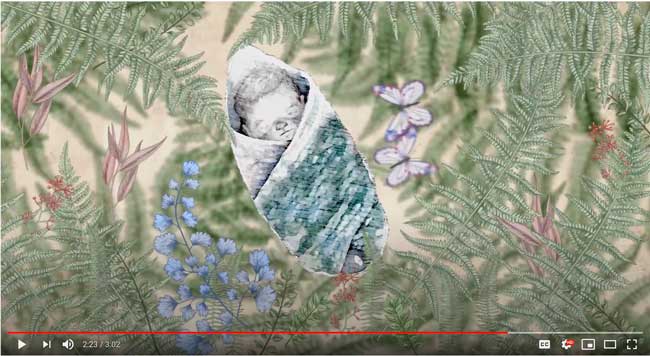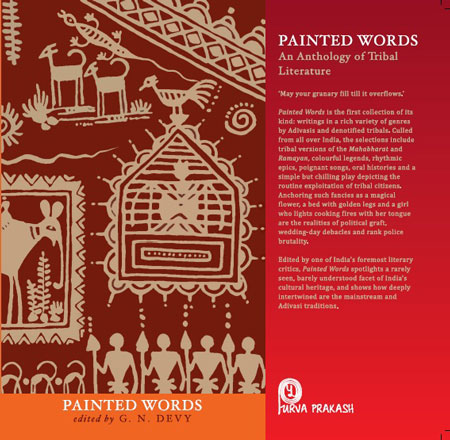We live for our Niyamgiri: Dongria Kondh tribe, India from Survival International on Vimeo.
Watch the video interviews “We live for our Niyamgiri: Dongria Kondh tribe, India” on vimeo (duration 2 min. >>
The Dongria Kondh have lived in Niyamgiri for thousands of years and their lifestyle and religion have helped nurture the area’s dense forests and unusually rich wildlife.
A recent study found that the Dongria gather almost 200 different foods from their forests and harvest over a hundred crops from their fields. This amazing diversity sustains them year-round, with little need for food or goods from beyond their hills. The tribe also keeps chicken, pigs, goats and buffalo. Dongria men gather juice from the forest’s giant sago palm trees, a drink that provides energy for the long hikes they make throughout the Niyamgiri Hills.
Source: “We’ll lose our soul. Niyamgiri is our soul.”
URL: https://survivalinternational.org/dongria
Date Visited: 2 September 2023
The Dongria live in villages scattered throughout the hills. They believe that their right to cultivate Niyamgiri’s slopes has been conferred on them by Niyam Raja, and that they are his royal descendants. They have expert knowledge of their forests and the plants and wildlife they hold. From the forests they gather wild foods such as wild mango, pineapple, jackfruit, and honey. Rare medicinal herbs are also found in abundance, which the Dongria use to treat a range of ailments including arthritis, dysentery, bone fractures, malaria and snake bites. […] A recent study found that the Dongria gather almost 200 different foods from their forests and harvest over a hundred crops from their fields. This amazing diversity sustains them year-round, with little need for food or goods from beyond their hills.
Source: “Royal descendants of the mountain God” – Survival International
Address : https://www.survivalinternational.org/tribes/dongria
Date Visited: 9 September 2020
Like in film, mining poses extinction threat to Niyamgiri hills inhabitants
Prasanta Paul, Kolkata, March 10, DH News Service | Read more in the Deccan Herald >>
The blockbuster sci-fi film ‘Avatar’ might have missed Oscar for the best movie by a whisker, but director of this blockbuster James Cameron ought to have reasons to cheer as his record-breaking film has stirred the hearts of hundreds of tribals in Niyamgiri mountain in Orissa. […]
There might be, however, a basic difference between Cameron’s “Avatar” and the fight of the tribals in Orissa. In the reel life, the fight to save the Na’vi’s “Tree of Souls” is a battle between good and evil.In the real life, the tribals’ movement to save the Niyamgiri mountain is akin to a dilemma of industrialisation versus tribal rights and highlights a broader standoff between industry and villagers and tribesmen in India’s one of the rich mineral belts and yet one of the most underdeveloped state of Orissa.
Source: ‘Avatar’ sparks fire in Orissa’s tribal hearts
URL: https://www.deccanherald.com/content/57424/avatar-sparks-fire-orissas-tribal.html
Date Visited: 9 September 2020

Watch “The Good Ancestor – The Legacies We Leave” (3 min.): An animation that explores the legacies we might leave for future generations >>
Links to some of the most important organisations, thinkers and doers that are leading the way and that have inspired the book The Good Ancestor by Roman Krznaric >>
Reports in the Indian press | List of periodicals included in this search >>
Search tips
Combine the name of any particular state, language or region with that of any tribal (Adivasi) community.
Add keywords of special interest (health, nutrition endangered language, illegal mining, sacred grove); learn about the rights of Scheduled Tribes such as the “Forest Rights Act” (FRA); and the United Nations “Declaration on the Rights of Indigenous Peoples”, “Universal Declaration of Human Rights”, “women’s rights”, or “children’s right to education”.
Specify any other issue or news item you want to learn more about (biodiversity, bonded labour and human trafficking, climate change, ecology, economic development, ethnobotany, ethnomedicine, global warming, Himalayan tribe, hunter-gatherers in a particular region or state, prevention of rural poverty, water access).
For official figures include “scheduled tribe ST” along with a union state or region: e.g. “Chhattisgarh ST community”, “Scheduled tribe Tamil Nadu census”, “ST Kerala census”, “Particularly Vulnerable Tribal Group Jharkhand”, “PVTG Rajasthan”, “Adivasi ST Kerala”, “Adibasi ST West Bengal” etc.
In case the Google Custom Search window is not displayed here try the following: (1) toggle between “Reader” and regular viewing; (2) in your browser’s Security settings select “Enable JavaScript” | More tips >>
Tips for using interactive maps
Toggle to normal view (from reader view) should the interactive map not be displayed by your tablet, smartphone or pc browser
For details and hyperlinks click on the rectangular button (left on the map’s header)
Scroll and click on one of the markers for information of special interest
Explore India’s tribal cultural heritage with the help of another interactive map >>
See also
Adverse inclusion | Casteism | Rural poverty
Demographic Status of Scheduled Tribe Population of India (Census figures 2011)
Fact checking | Figures, census and other statistics
Human Rights Commission (posts) | www.nhrc.nic.in (Government of India)
Search tips | Names of tribal communities, regions and states of India
“What is the Forest Rights Act about?” – Campaign for Survival and Dignity
“Who are Scheduled Tribes?” – Government of India (National Commission for Scheduled Tribes, NCST)
“India, a union of states, is a Sovereign, Secular, Democratic Republic with a Parliamentary system of Government. The President is the constitutional head of Executive of the Union. In the states, the Governor, as the representative of the President, is the head of Executive. The system of government in states closely resembles that of the Union. There are 28 states and 8 Union territories in the country. Union Territories are administered by the President through an Administrator appointed by him/her. From the largest to the smallest, each State/UT of India has a unique demography, history and culture, dress, festivals, language etc. This section introduces you to the various States/UTs in the Country and urges you to explore their magnificent uniqueness…” – KnowIndia (Government), States and Union Territories (Visited: 2 September 2023)
Learn more about India’s 28 States and 8 Union Territories – From Andhra Pradesh to West Bengal | Nutrition >>
